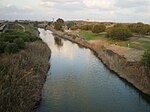Assuta Ashdod Medical Center

Assuta Ashdod Medical Center is a general hospital in Ashdod, Israel. It began operation on June 4, 2017, and was opened in stages, assuming full operation in November 2017. The hospital has 300 beds and serves the population of Ashdod and its suburbs.For decades the local government of Ashdod struggled to establish a public hospital. Ashdod residents in need of hospitalization needed to travel to Kaplan Medical Center in Rehovot or Barzilai Medical Center in Ashkelon. In 2002 the Knesset accepted a law proposed by MK Sofa Landver which forced the state to build the hospital. However the tender was released only in 2009. Despite multiple objections the tender was won by Assuta (a subsidiary of Maccabi Healthcare Services). Assuta Ashdod has partnered with Ben Gurion University's Medical School to train Israel's next generation of doctors. The hospital is fully prepared for security crises, including terrorist incidents and rocket attacks. Its “bomb-shelter” design with thick concrete walls offers extensive protection, with no need to move patients from operating rooms, ICU, inpatient wards, and other critical areas in the event of a missile attack. Assuta Ashdod is Israel's first eco-friendly hospital, meeting standards for green construction and operations.
Excerpt from the Wikipedia article Assuta Ashdod Medical Center (License: CC BY-SA 3.0, Authors, Images).Assuta Ashdod Medical Center
Yitzhak Shamir, Ashdod
Geographical coordinates (GPS) Address External links Nearby Places Show on map
Geographical coordinates (GPS)
| Latitude | Longitude |
|---|---|
| N 31.780277777778 ° | E 34.657222222222 ° |
Address
בית חולים אסותא אשדוד
Yitzhak Shamir
7757403 Ashdod
South District, Israel
Open on Google Maps











